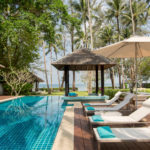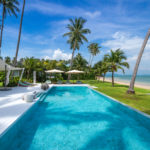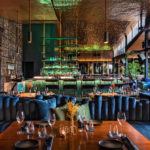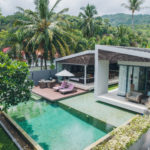Traditionally, the Japanese don’t do New Year’s as we might. The New Year is a time for families, coming together and refreshing the soul. That’s not to say that there aren’t Western celebrations in resort towns like Niseko, Hakuba and Kiroro – there are plenty. However, if you’re heading to the slopes this year, why not learn a bit more about the local culture. Here’s all you need to know about a few Japanese New Year’s traditions, the ones that you can get in on and, of course, some of the events that feel a bit closer to home.
A Japanese New Year
Omisoka
This is probably one tradition you won’t be getting involved in because it’s all about the home, but on Omisoka or New Year’s Eve, families come together for an osoji. This “big cleaning” is all about starting the new year with a fresh mind – aka decluttering. The osoji can take a few days, so, if you notice that no one on the slopes is Japanese for the days leading up to NYE, that’s probably because they’re at home and preparing.
Joya no Kane

If you’re not down in town or asleep at midnight, you might notice the sound of temple bells being struck 108 times. Yes, exactly 108 times – this is because, in the Buddhist tradition, humans are plagued by 108 earthly ills like anger and envy. Each strike removes one ill. “Joya” is all about cleansing your mind of anxiety.
Whether or not the temple bells can actually rid your mind is still to be determined, but if you head to a nearby temple you might be able to find out!
Read also: Meet Kiroro – Everything to know about the Japanese Ski Resort
Toshikoshi-soba

Toshikoshi-soba is the tradition of eating soba on New Year’s Eve. This is because when soba is made, the dough is stretched and cut long and thin – representing a long and healthy life. Additionally, the cutting of the dough symbolises the removal of the previous year’s misfortunes.
At places of worship like a shrine, locals and foreigners alike will gather, eat soba and mochi, and take part in the tradition of Hatsumode.
Hatsumode

The first visit to a shrine or temple directly after the New Year, families come together and pray for a fortunate year ahead. Some shrines will organise festivities (including the soba and mochi eating) and discover their fortunes through omikuji – the selection of paper strips with fortunes written upon them.
Witnessing or taking part in this is all about praying for good fortunes, like safety, prosperity and, of course, good exam results.
Where to experience these events:
If you’re in Niseko: There are several temples and a shrine in the neighbouring town of Hondori, where the Niseko train station is. There is another temple near the Hirafu Golf Centre.
If you’re in Hakuba: Near the Hakuba train station in Happoguchi, Yakushido temple is the place to go.
If you’re in Kiroro: Head to Daishoji temple in the neighbouring town of Miyako if you want to witness the bells toll. If you’d rather be closer to your hotel, try Tokiwa Shrine, which is five minutes down the road.
Read also: If Reindeers are From the Arctic, Can They Ski? – The Christmas Events Not to Miss Around Kiroro
A Western New Year
If the Japanese traditions aren’t your thing, that’s totally fair. There are other things to do. For example, the hotels will typically have fireworks displays on New Year’s Eve, complete with soba (so you can still get in on the Toshikoshi-soba), sake and raffles. Here we break down some of the happenings in Kiroro, Niseko and Hakuba.
Torch Skiing – All

One tradition we’re obsessed with is torch skiing. By application at the resorts’ Welcome Centres, a select group of skiers and snowboarders will get to cruise down the mountain, torches in hand, lighting up the night sky.
Niseko Village New Year Sunrise Gondola – Niseko

Ok, this is a bit of a Japanese tradition, but it has a brilliant westernised twist to it. For the Japanese, watching the first sunrise of the year brings good luck. For the ultimate in good luck watch it from Niseko Village’s Gondola.
For this experience, wake up early (or stay up late) and head to the gondola around 6 AM.
Annupuri First Run – Niseko
Be the first rider on the slopes in 2020! The Annupuri Gondola opens at 7 AM and you can charge down the mountain with no competition.
Party at the Ice Bar! – Kiroro

In the past, and we don’t expect it to be any different this year, Kiroro’s famed Ice Star Bar (which is made entirely from ice and re-constructed each year) has hosted New Year’s Eve parties for those whose legs still work well past midnight. The bar gets a DJ in to spin all through the night, and even better, there is a sake barrel opening ceremony.
New Year’s events in these areas are still being rolled out. We’ll be updating this article as new events are announced, so keep checking back in!





